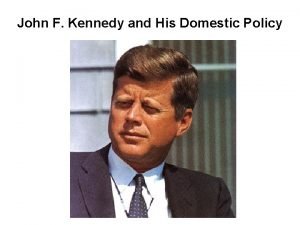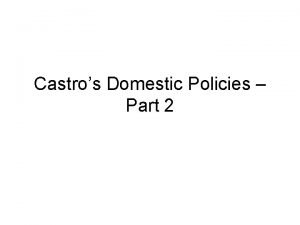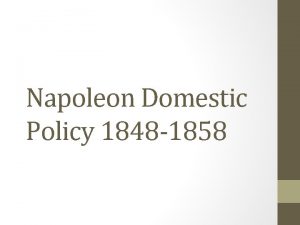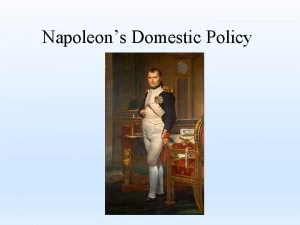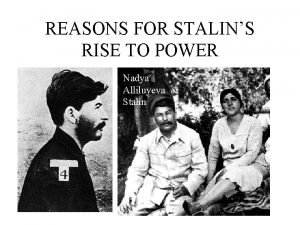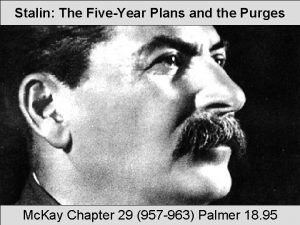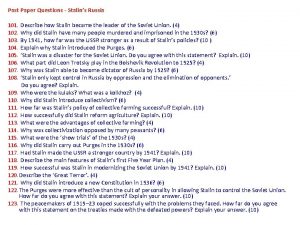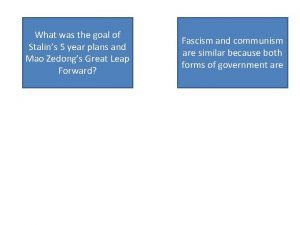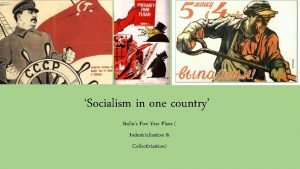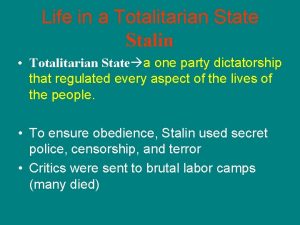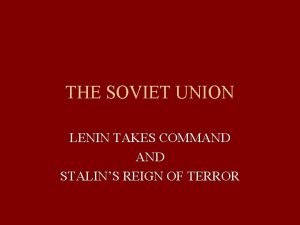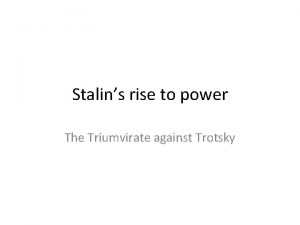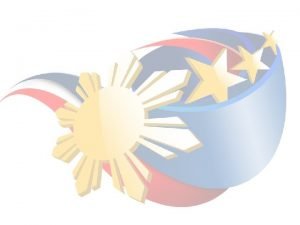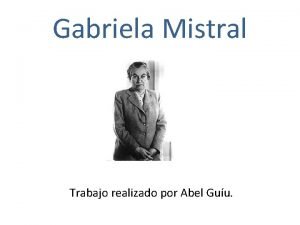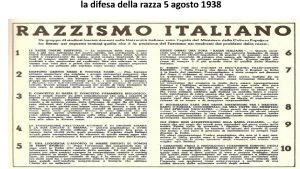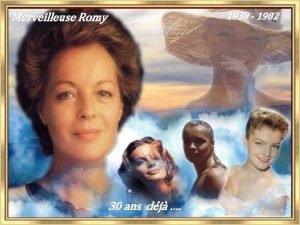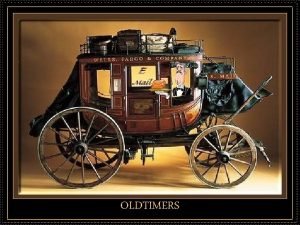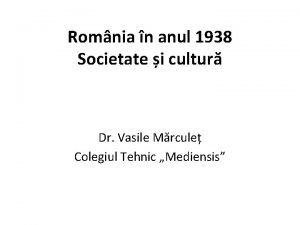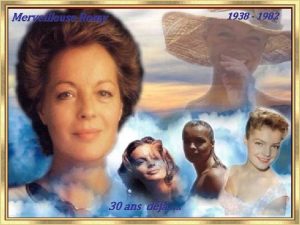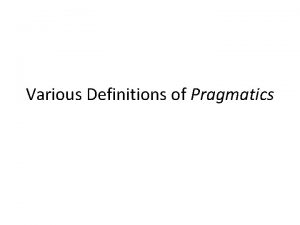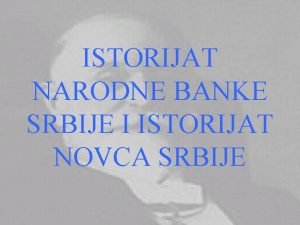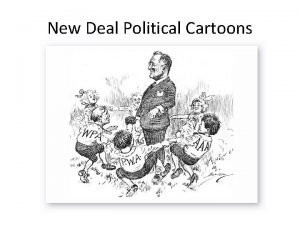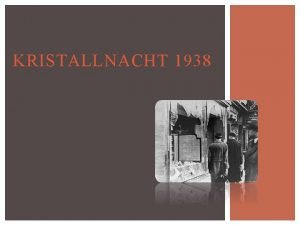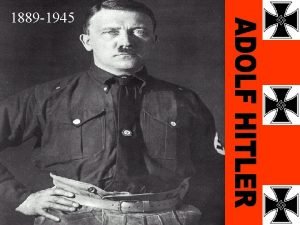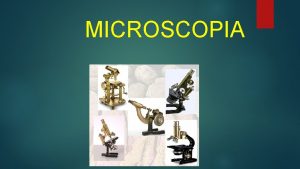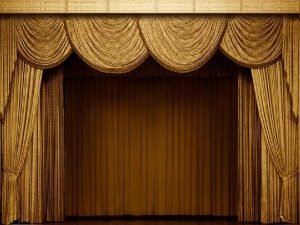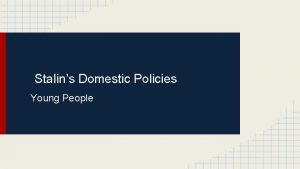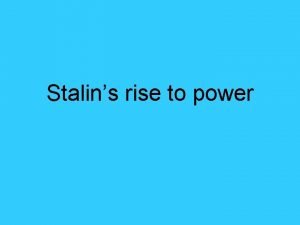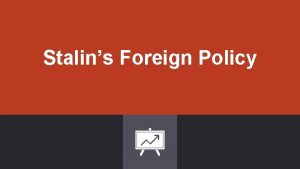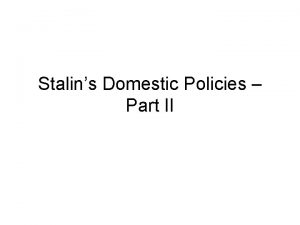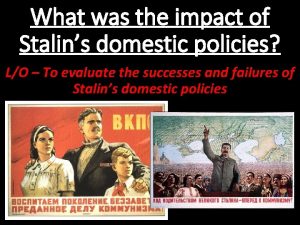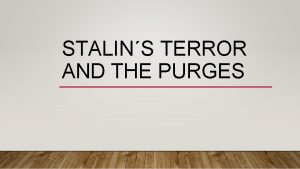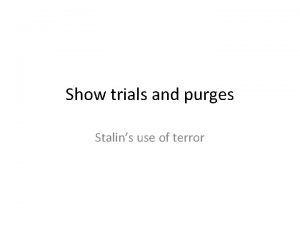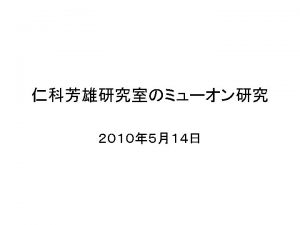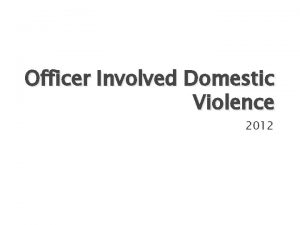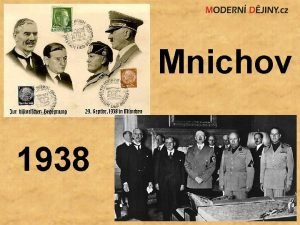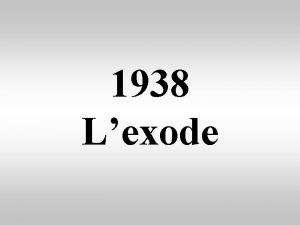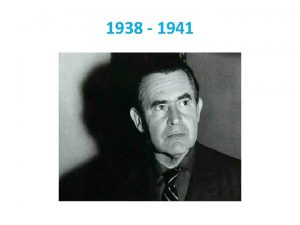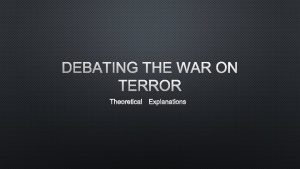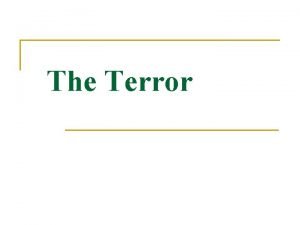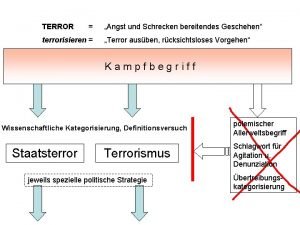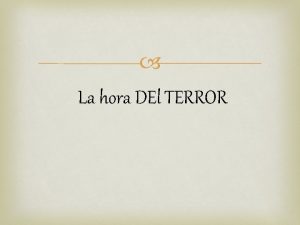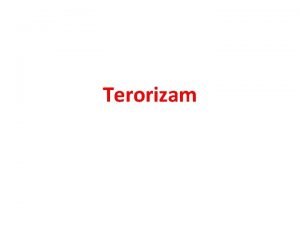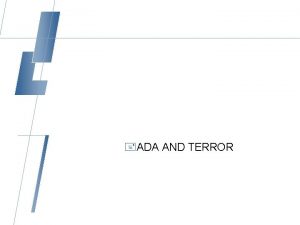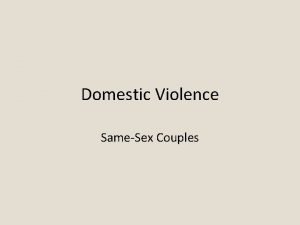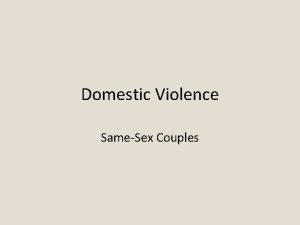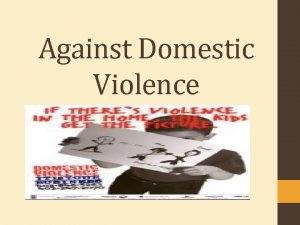Stalins Domestic Policies Great Terror 1934 1938 Involved




































- Slides: 36

Stalin’s Domestic Policies

Great Terror (1934 -1938) • Involved “the removal of unwanted or potentially threatening elements from the country”: – Former members of anti-Soviet parties – Former Whites – Former tsarist bureaucrats – Nobles – Kulaks – Foreigners – Priests – Army officers – Party members

Great Terror • Former members of anti. Soviet parties, former Whites, former tsarist bureaucrats, and nobles – all had been against the rise of communism • Kulaks – better-off peasants were scapegoated as being counterrevolutionary

Great Terror • Foreigners – Ethnicities were accused of being spies and wreckers • Priests – Anyone who identified with Communism was enlightened and progressive, while those who held belief in God were backward and counter-revolutionary • Army officers – Stalin believed they were getting too powerful and might launch a coup • Party members – Stalin was tired of being opposed by the “left” and “right”


NKVD – Communist Secret Police • Arranged the arrest of all the leading political figures in the Soviet Union who were critical of Stalin • The Secret Police broke prisoners down by intense interrogation: – Threatened to arrest and execute members of the prisoner's family if they did not confess – Interrogations lasting for several days and nights • Eventually the NKVD was purged as well for having “fascist elements” and killing innocent people

Show Trials • Show Trials of prominent communists were often staged based on forced confessions and ending in hangings or shootings • The purpose was to put people on display who were against Stalin’s policies so that no one would dare criticize him Bukharin, a loyal supporter of Stalin, was killed after a show trial

Gulags • Labor camps were to transform “criminals” into good citizens, although most would live a year or less • Men, women, and young children could all be sent to the Gulag for being petty thieves, homeless, shoddy work, being more than 20 minutes late, or breaking passport laws • Over 20 million were sent to the Gulags to work on canals, railroads, subways, architectural projects, and forestry • There was little food, torture, no machinery, in remote areas, rape and sexual abuse









Local Party Leaders Spread Terror • Local party bosses exceeded quotas to round up “enemies” of the state • Many held their own show trials and purged local party leaders • Nikita Khrushchev was party boss of Moscow who eagerly used terror

Reasons for the Terror • To remove rivals and those who weren’t for Stalin’s ideology • To replace people with officials who were devoted to Stalin • To create a source of slave labor to reach industrial goals • Terrorize the population by arresting the innocent as well as the guilty, so that no one could feel safe

Reasons for the Terror • To rid of opposition who would’ve opposed an alliance with Hitler • Stalin had a brutal personality • Stalin believed that traditionally people valued a strong Tsar • Overzealousness to settle personal scores

Effects of the Purges • • Approximately 20 million died Opposition to Stalin was removed The Cult of Personality around Stalin grew Many of the most talented and proficient members of Soviet society were eliminated • Initiative became dangerous • The purge of Soviet army officers weakened the army and may have encouraged Hitler’s attack • Millions of innocent people were executed or imprisoned

Industry In Russia • It was not until 1927 that production had reached the levels achieved before the start of the First World War • Stalin's advisers told him that with the modernization of farming the Soviet Union would require an extra 250, 000 tractors • As well as tractors there was also a need to develop the oil fields to provide the necessary petrol to drive the machines • Power stations also had to be built to supply the farms with electricity

Rapid Industrialization • Stalin wanted rapid industrialization to: – Free Russia from dependence on capitalist states for goods – Make Russia economically strong so that she would be able to produce more powerful weapons – Prove that the socialist system was more successful than capitalism – Raise the standard of living

Five Year Plans • First Five Year Plan (1928 -1932) – Aimed to create an industrial base for further development through the rapid expansion of coal and steel production, electrical power, and transport • Second Five Year Plan (1933 -1937) – Aimed to diversify and the focus shifted to communication systems such as railways and new industries such as the chemical industry • Third Five Year Plan (1938 -1941) – The aim was weapons production

Gosplan • This was a group responsible for administering the Five Year Plans • They decided: – The amount of every article the country should produce – How much of the national effort should go into the formation of capital and how much for consumption – The wages all classes of workers should receive – The price of all goods exchanged

Five Year Plans - Positives • Russia was transformed into a major industrial power second only to the U. S. • The Five Year Plans allowed the USSR to resist the German invasion • Living standards declined at first, then improved slowly • Industrial production increased, albeit slowly • Unemployment in Soviet Russia was unknown and crime was scarce • Workers received free education, day cares, free medical services, and old-age pensions

Five Year Plans - Negatives • Communist principles were compromised: – Good workers were rewarded with higher pay and competition between factories was encouraged – Capitalist models were used for nearly every project – Stalin had to import experts and borrow technology from the West • Food was taken from the peasants and given to the workers in the cities, causing mass starvation • Russians suffered a lack of consumer goods and daily necessities

Five-Year Plans - Negatives • There were few individual freedoms for workers and punishments for small violations were harsh – being late, absent, bad workmanship • Working conditions were dangerous and if targets were not met, severe punishments would be inflicted • Overcrowding and poor sanitation were common • Most workers could only afford one-room houses • Pay for most workers was very low

Life of Workers • Workers worked hard anyhow because: – Stalin was known as “Uncle Joe” – they believed in his propaganda and thought they were working for a better society – Groups of workers were encouraged to compete against one another for rewards – Those who did not work hard were sent to Gulags (missing work carried a prison sentence)

Media & Propaganda in the USSR • State control of the media was total • Newspapers and films continually told of socialist achievements and capitalist plots • Those who attempted to listen to or read anything from the West were severely punished

Media & Propaganda in the USSR • The poster was strictly censored and heavily used for propaganda • The words “Those who take down the poster commit a counter revolution” were printed at the bottom of each one • Poster artists were instructed to condemn capitalism and praise Stalin • Stalin was portrayed as a father figure





Media & Propaganda in the USSR • Private cinema was eliminated under Stalin and movies were used to portray a political agenda • Only 9 -12 films were produced each year and were examined several times by the Politburo and Stalin himself to ensure they portrayed the correct message • Typical themes were anti-fascism, ethnic equality, the fad of aviation, and the pleasure of life under Stalin • Many films were about good workers, laborers, and brave soldiers

Happy Birthday Dear Stalin, Happy Birthday To You! • The first major opportunity to establish a Stalin cult along the lines of Lenin came on Stalin’s 50 th birthday on Dec. 21, 1929 • A wide array of people numbering in the thousands were mobilized from all walks of life to show their devotion by writing letters to Pravda • Pravda alone printed 200 messages of congratulations, 117 of them between Dec. 21 and 28 • 483 different terms were used to designate Stalin’s preeminence
 John f kennedy domestic policies
John f kennedy domestic policies Castro's domestic policies
Castro's domestic policies Domestic policies of napoleon
Domestic policies of napoleon Mao's domestic policies
Mao's domestic policies Domestic policies of napoleon
Domestic policies of napoleon Eisenhower domestic policies
Eisenhower domestic policies Nadia alliluyeva
Nadia alliluyeva Stalin 5 year plan
Stalin 5 year plan Stalins kd
Stalins kd Stalins goal
Stalins goal Stalins five year plans
Stalins five year plans Life in a totalitarian state
Life in a totalitarian state Stalins reign
Stalins reign Trotsky
Trotsky Stalins 5 year plan
Stalins 5 year plan Norvagisering
Norvagisering Nasyonalismo noong unang digmaang pandaigdig
Nasyonalismo noong unang digmaang pandaigdig Madrecita mía de gabriela mistral
Madrecita mía de gabriela mistral 5 agosto 1938
5 agosto 1938 1982-1938
1982-1938 Kirjandusrühmitus
Kirjandusrühmitus 1922 duesenberg
1922 duesenberg Merton strain theory 1938
Merton strain theory 1938 Romania in anul 1938
Romania in anul 1938 1982-1938
1982-1938 Morris 1938 pragmatics
Morris 1938 pragmatics 1938 presidential stamps
1938 presidential stamps Istorija srpskog novca
Istorija srpskog novca How the south interprets the new deal
How the south interprets the new deal 1938 stroomstoten
1938 stroomstoten Rebecca 1938
Rebecca 1938 1938 time man of the year
1938 time man of the year German aggression map
German aggression map 1590 microscopio
1590 microscopio Aysel batakli damin kizi 1934
Aysel batakli damin kizi 1934 Lev vygotsky (1896-1934)
Lev vygotsky (1896-1934) British cartoon by david low 1934
British cartoon by david low 1934
